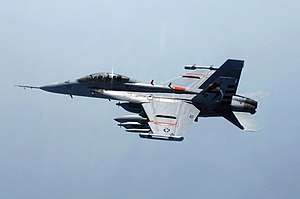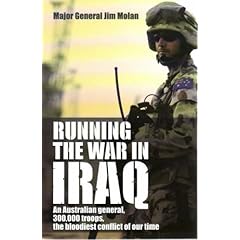Defence Budget Audit Needs Needs More ICT
Rather than the process driven approach which has been tried in Defence many times and failed, I suggest a behaviour driven approach. This would retrain defence staff, both civilian and military with the new skills they need and provide direct incentives for them to use those skills effectively. Also they staff would be provided with the tools to work effectively, particularly ICT systems.
As an example, the audit report identifies video conferencing as a technology for savings, by replacing air travel. However, if staff are not trained in how to use video conference effectively and are not given incentives to use it, the technology will remain underused. At best video conferencing will be used to replace some unproductive face to face meetings with unproductive virtual ones.
Available are:
- DEFENCE BUDGET AUDIT RELEASED, Media Release, John Faulkner , Minister for Defence, MIN49/09, 17 November 2009
- Response to the Defence Budget Audit, Department of Defence, 17 November 2009
- Executive Summary, Defence Budget Audit, Department of Defence, 17 November 2009
- Defence Budget Audit, Department of Defence, 17 November 2009
The executive summary states:
Capturing efficiency while reforming ICT. A holistic ICT transformation is planned to significantly improve the quality of the ICT infrastructure provided to Defence. While the current focus on the transformation effort is primarily on quality, there should be an increased focus on capturing the significant efficiencies in the process.Several of the more general recommendations also relate to the use of ICT more effectively (excerpt appended).
These reforms could save Defence 15 to 30% per year in operating costs, dependent on the future ICT strategy. These savings are estimated at $215 million per year, but have not been analysed in detail because the ICT strategy is beyond the scope of this review.
From: Executive Summary, Defence Budget Audit, Department of Defence, 17 November 2009
Extensive documentation has been provided for the audit, with an executive summary (8 pages), full report (308 pages) and government response (4 pages). One flaw in this is that the response is a secured PDF document which cannot have text copied from it, making analysis difficult.
More seriously, the report itself is provided in the form of a bitmap images with no accompanying text. As a result it is not possible to search the document nor copy text from the document (copying has been barred for this document in any case). Where a document is only available in hard copy form it may be necessary to scan it in for online distribution. PDF has an option to provide an optical character recognition version of the document for searching, which has not been done in this case. Also this document has not been generated from a paper original, it is from a digital original. Those who produced the PDF version will have had to make a deliberate decision not to provide it in an easy to search text format and so as to limit access to the document by the public. Such action by a public servant is unethical and may be contrary to Australian law. In any case the document provided does not meet the Disability Discrimination Act Advisory Notes issued by the Australian Human Rights Commission likely placing the Department of Defence in breech of the Act.
From the Executive Summary, Defence Budget Audit, Department of Defence, 17 November 2009:
Reducing the cost of Defence inputs can be achieved in three ways:Although a longterm task, there are significant opportunities to reduce the cost of major equipment procurement through:
- Reducing non-equipment procurement costs. Defence procures a wide range of commercial products and services such as building services, travel and relocation services. Clear opportunities exist to reduce these costs by:
- Procuring more competitively priced products and services. For example, unbundling routes and removing price arbitrage on removal contracts.
- Changing the specifications for what is required to obtain less costly products, where doing so will not compromise capability. For example, increasing the procurement requirement that military clothing is imported from low cost countries.
- Changing patterns of use. For example, making greater use of Defence’s extensive video-conference network rather than undertaking single day travel.
- These improvements can save Defence between $326 and $518 million per year in non-equipment expenditure.
- Reducing the cost of major equipment procurement.
Purchasing a greater proportion of MOTS (which the most recent Defence Capability Plan (DCP) plans for) and increasing the level of competition on major contracts (which partially overlaps with savings identified in the lean backbone section) could ease cost pressures by $345 to $660 million, but these are not ‘banked’ as savings.
- Procuring a higher proportion of MOTS equipment
- Increasing the level of competition for major equipment acquisition and sustainment contracts
- Reviewing the proportion of local sourcing which is not justified by strategic requirements.
The total productivity dividend from all of these measures is in the range of $1.3 to $1.8 billion per year, and a one-off saving of $218 to $398 million. The extent of reform required to capture these savings will take 3 to 5 years. The operational cost savings already identified by Defence (as part of the Defence Savings Plan, also know as ‘E2’) have been integrated with or replaced by the Audit savings, which provide analytical substance, much greater detail and show where Defence can go further to realise additional savings.
- Reducing the cost of combat capability through the use of Reserves.
Beyond support functions, there is also an opportunity to deliver the same military capability at a lower cost through a flexible surge model. This model makes expanded use of Reserves and deployable contractors.
These changes could reduce the cost of combat capability by ~$50 million per year.
Removing the long-term structural inefficiencies of a fragmented estate. This can be achieved by starting the process of consolidating estates into an efficient superbase model, laying the foundation for the next ‘S’ curve in Defence productivity. A superbase model would dramatically reduce subscale base costs,
extensive travel and relocation expenses, and the costs associated with managing a complicated supply-chain network.
The estimated yearly savings from a superbase model that would meet Australia’s strategic requirements would increase over time (assuming a staged consolidation), and could reach $700 to $1,050 million by 2035 (in 2008 dollars). ...
From: Executive Summary, Defence Budget Audit, Department of Defence, 17 November 2009
Labels: accessibility, audit, defence, defence technology










